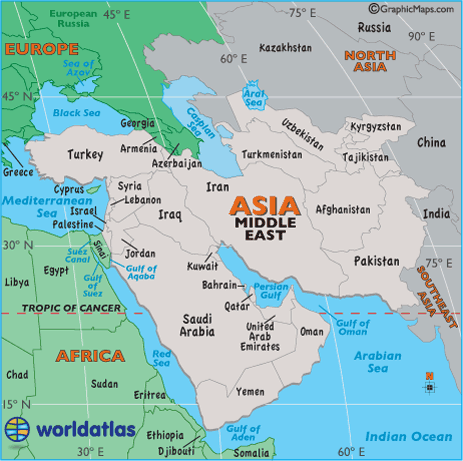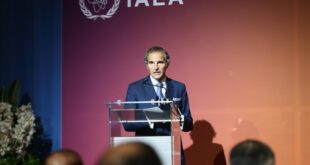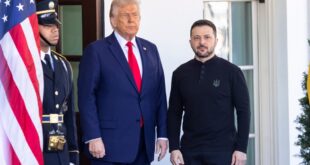The Middle East has not been easy on US presidents over the past seven decades. Historically, support for Israel and its right to exist within defensible borders has been tenuously balanced against the need to defend shipping lanes for oil and otherwise protecting world energy supplies. But the difficulties faced by previous US administrations pale in comparison to those created by the challenges of today’s Middle East.
Israel is still there, but it has become a much more difficult ally. Prime Minister Binyamin Netanyahu’s address to a joint session of the US Congress in March, at the invitation of President Barack Obama’s domestic opponents, has subjected a key foreign-policy issue to the distortions of America’s deep and disabling partisan polarization.
Meanwhile, ensuring secure oil supplies and shipping lanes has become more complicated, because the US must now play the entire chessboard of Arab issues. Worse, it has sometimes seemed to be playing blindfolded, with significant gaps between local realities and policymakers’ understanding of them.
When the Arab Spring began four years ago, the US pushed instinctively for regime change in Libya, Syria, and Egypt, while defending the new constitutional order in Iraq. The results should be read as a cautionary tale for those seeking instant gratification through regime change. Though some highly unsavory leaders were removed, what followed has been even worse. The main effect of regime change has been to strengthen sectarian identities and weaken existing nation-states’ prospects for survival.
And now high-stakes negotiations with Iran over its nuclear program have been superimposed on the complexity of Arab issues. The Obama administration has been accused of wanting the agreement too much, of being unwilling to walk away. But if that charge is true, it is not because Obama desperately wants to fulfill the pledge that he made early in his 2008 election campaign: to negotiate with America’s enemies and find common ground.
More important, there is a paucity of viable alternatives to an agreement. By all accounts, Iran is a society deeply divided between those who want their country to be a respected member of the international community and those for whom Iran’s international status is better served through a nuclear-weapons program. The international sanctions that have been imposed on Iran would appear to aid the latter, rather than the former.
That might well be true if Iran were a full-fledged democracy, genuinely accountable to the will of the people. But there is scant evidence to suggest that sanctions have done anything to slow Iran’s nuclear program. Moreover, as is often the case, sanctions may have done more to decimate the middle class and further weaken the least powerful than to motivate Iran’s leaders to seek a deal.
For many Americans, the showdown with Iran is a bilateral struggle, a kind of replay of nuclear talks with the Soviet Union. In some respects, the US Senate’s insistence that it play a role in approving the nuclear deal reflects a kind of back-to-the-future mindset: surely if the SALT and START agreements were legally binding treaties between two states, so must an agreement with Iran.
But the agreement being negotiated with Iran is multilateral, involving all of the UN Security Council’s permanent members, plus Germany. Part of Obama’s job is to ensure that the American people understand that the agreement’s fate is not only about the US.
And the so-called parties to the talks are not the only countries with a large stake in the outcome. The Arab world has grown increasingly anxious as it contemplates a nuclear deal. Heightened Shia-Sunni conflict, together with Shia Iran’s audacious meddling in predominantly Sunni Arab countries, has greatly increased skepticism in the region about any agreement. Indeed, Iran’s religious leaders have made no secret of their desire for regional hegemony, if not leadership of the Islamic world.
Distrust between Iranians and Arabs is even older than the Shia-Sunni divide; and, in an era that will most likely be remembered as one of weakened leadership throughout the region, Arabs view the nuclear talks as being about something far more fundamental than arms control. With the Arab world in turmoil, could the US be seeking an alternative strategic framework in the region, in the form of a renewed partnership with Iran?
For many Americans with bitter memories of Iran, that scenario may be unappealing, to say the least. Yet, viewed from the Arab world, Iran seems to be a much more stable element in the regional equation, a player that is poised to move forward.
The US is increasingly alert to this strain of thinking in the Arab world, and is actively courting Saudi Arabia. Indeed, America’s tacit support for the Saudis’ dubious bombing campaign in Yemen suggests the lengths that the US will go to address Sunni Arab anxieties.
More broadly, confronting the Islamic State and stabilizing Iraq, Syria, Libya, and Yemen will require an all-out US diplomatic effort. That means allaying Saudi fears, rebuilding the relationship with Egypt, and, yes, reaching out to Iran – priorities that are based on the realities of the contemporary regional environment. Indeed, the top priority – for Obama and his successor alike – must be to explain why the grave errors of the recent past have made such realism the only plausible option.
Source: Project Synidicate
 Geostrategic Media Political Commentary, Analysis, Security, Defense
Geostrategic Media Political Commentary, Analysis, Security, Defense





